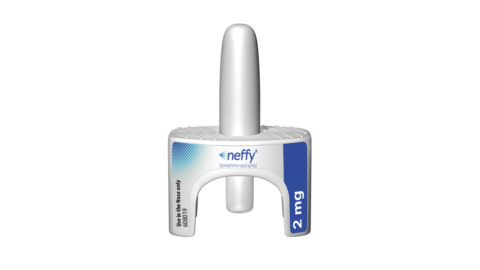If you want to search Cost Curve back issues or link to anything you read here, the web links and archive are online at costcurve.beehiiv.com. You can subscribe there, too.
Whether you like the CMS bailout of Part D plans for next year or not, it seems pretty clear that the gambit was successful. The $2,000 cap is going to put a lot of pressure on premiums, but it’s now official: federal dollars are going to ensure that pressure doesn’t hit beneficiaries.
There is a lot of coverage of the CMS announcements on how Medicare Part D and Medicare Advantage policies will look next year, including — and especially — the news that the average premium will fall slightly.
This is one where the headlines are illuminating. NYT: “Biden Officials Stave Off Sticker Shock on Medicare Drug Premiums.” AP: “Medicare Advantage shopping season arrives with a dose of confusion and some political implications.”
If you like your drama HRSA style,** then Friday was a big day for you.
Nearly 200 members of Congress wrote to HRSA demanding that they do something, anything, to push back on Johnson & Johnson’s plan to move to a rebating model in 340B for two of its drugs.
And HRSA, not to be outdone, sent a threatening letter to J&J letting them know that they’d be placed on double-secret probation if they didn’t abandon their plan by the end of the month. J&J, for their part, told Endpoints that HRSA could go pound sand. (The company used more measured words).
I’m unmoved. As the great William S. once wrote, this is “sound and fury, signifying nothing.”
Neither the HRSA response nor the congressional letter gets at the heart of the conflict here. Neither letter even utters the word “duplicate” (or “duplicative” or any variation). So I would propose there are four questions must be considered when looking at this. The first three are being utterly ignored:
Do duplicative discounts — the impetus for the J&J change — exist? In other words, are there cases when a 340B-priced medicine is processed in such a way that an additional discount is paid to another payer? If the answer here is “dunno*** then the call really should be for a lot more scrutiny and analysis.
If duplicative discounts exist, do you think that’s a problem? Look, if members of Congress (or HRSA) think this is happening and that it’s OK, that’s important to know.
If duplicative discounts exist and are a problem, is there a better solution than the one proffered by J&J? Again, nothing in either letter suggests a better mousetrap exists.
Is the J&J effort legal? Here, we have lots of commentary, and HRSA definitely has an opinion. But it’s unwise to assume that HRSA — an interested party (and, soon, a legal) party — has a particularly credible view. Indeed, I’ll leave the last word on this to William S. (A different William S, to be sure, but Shakespeare wasn’t much of a health policy guy.) Bill Sarraille has a great examination of the core legal conflicts here, and he’s putting his chips on J&J.
So here’s my general request: if you’re thinking about or writing about or otherwise analyzing this particular 340B debate, please keep all four questions in mind.
And if you’re reading about this particular debate, and you see those four questions ignored, you’re probably being spun.
** I realize that the other 95% of you skipped this whole write-up.
*** That’s not the answer. I’ve never met anyone who has argued that duplicative discounts don’t exist, even if the data is spotty.**** By allowing “dunno” as an acceptable answer, I’m giving skeptics the benefit of the doubt.
**** If you have good data here, please let me know!
Gavin Newsom, California’s governor, vetoed a super-popular PBM reform bill, offering a fairly unconvincing rationale. I don’t hang out in Sacramento, so I have no useful perspective. This is same guy who blew up an effort to mandate $35 insulin last year, all while hanging on to the pipe dream of state-produced medicines. I have no idea what his health policy philosophy is. Open to theories.
This new paper from pharmacists at Vanderbilt on what happens when patients and doctors get prescription benefit information in real time mostly tracks with past studies. Even if repetitive, the upshot is not unimportant. The new work shows that dealing with insurance-company shenanigans at the doctor’s office — rather than the pharmacy counter — makes it more likely patients will actually pick up the meds they were prescribed.
This STAT story is worth the read. It’s focused on insurance company reimbursement of Sarepta’s DMD gene therapy, but it’s really about what happens to reimbursement when insurance companies can’t trust the FDA, which is a broader issue than just Sarepta (though Sarepta is a great example).
Thanks for reading this far. I’m always flattered when folks share all or part of Cost Curve. All I ask is for a mention or tag. Bonus points if you can direct someone to the subscription page.





